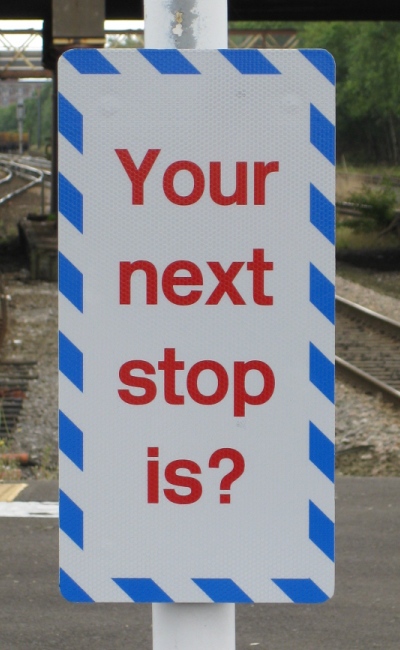|
Q.
|
What's included in this website?
|
|
A.
|
Signalling and signage, past and present, installed on the mainline railways of Great Britain (including high-speed lines) for the attention of train drivers. Experimental signs and signals are included, provided they have been exhibited alongside a railway open to normal traffic.
|
| | |
|
Q.
|
What's not included?
|
|
A.
|
Future signs and signals, metro and light rail signalling (London Underground, Tyne & Wear Metro, etc.), heritage railways, industrial railways, military railways, Channel Tunnel signalling, internal signalling within train maintenance depots, staff safety signs, signs giving information to passengers and the general public, signs displayed on train exteriors, road signs and traffic signals at level crossings, handsignals, lamps and flags.
|
| | |
|
Q.
|
Why don't you include the signs and signals on London Underground, Tyne & Wear Metro, etc.?
|
|
A.
|
My principal interest is in the mainline railways. I have neither the time nor the enthusiasm to research these other systems.
|
| | |
|
Q.
|
A sign or signal that I know about seems to be missing, so why can't I find it mentioned on this site?
|
|
A.
|
Try looking for it in another section. Alternatively, if the sign isn't aimed primarily at train drivers then it's probably outside the scope of this website. Lastly, it may be something that I don't know about, in which case please tell me about it!
|
| | |
|
Q.
|
What are your sources?
|
|
A.
|
Books, magazines, newsletters, journals, papers, IRSE proceedings, contractors' brochures, rule books, sectional appendices, general appendices, resignalling notices, weekly operating notices, rail industry standards, signalling plans, accident reports, photographs, videos/DVDs, CD-ROMs, websites, emails, letters, word of mouth and personal observations.
|
| | |
|
Q.
|
Why don't you show more detail in the illustrations; for example, of semaphore signals?
|
|
A.
|
There are very many patterns of signal that perform the same function but differ slightly in the details of their construction. If I were to show every detail down to the last nut and bolt, it might be wrongly inferred that a particular detail somehow influences the signal's meaning. Alternatively, it would be necessary to attempt to illustrate every trivial variation. To obviate this, I have simplified the illustrations to show just the generic visible features.
|
| | |
|
Q.
|
Are the illustrations drawn to scale?
|
|
A.
|
I can't guarantee that any specific illustration is drawn to scale although, in the majority, one pixel equates to one square centimetre.
|
| | |
|
Q.
|
Who took the photographs on this website?
|
|
A.
|
Unless credited otherwise, all photographs on the site were taken by me, the webmaster.
|
| | |
|
Q.
|
Would you accept contributions of photographs for use on your site?
|
|
A.
|
Yes please, especially if they show signs or signals that are uncommon or don't exist anymore. When submitting a photograph for potential use on the website, please tell me when and where it was taken. Note that it is not my aim to illustrate every kind of sign or signal with a photograph. Photographs of mileposts are always welcome for inclusion on the Milepost Styles pages.
|
| | |
|
Q.
|
Can I advertise on this website?
|
|
A.
|
No.
|
| | |
|
Q.
|
How long has this website been on line?
|
|
A.
|
It has been on line since 8 October 2005.
|
| | |
|
Q.
|
How much does it cost you to have this website on line?
|
|
A.
|
Ionos charges around £6 per month to host this website.
|
